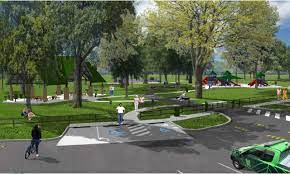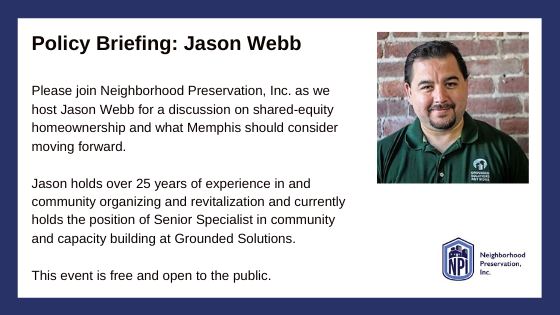The Urban Institute maps the growing income inequality and disparities across neighborhoods in Memphis, which ranks #18 among cities with more than 250,000 residents.
Meanwhile, Memphis ranks #15 for MSAs with largest decrease in homeownership, dropping from 65.8% in 2006 to 60.1% in 2013. To see rankings, click here.
From Governing:
It’s well known that income inequality has worsened over time, with a growing gap between the wealthiest Americans and much of the rest of the country. The issue, however, isn’t confined to individual households.
An Urban Institute report published this week presents a detailed picture of how inequality affects entire neighborhoods, showing stark disparities across communities within regions.
A few large cities have welcomed higher-income and better educated residents as neighborhoods experienced gentrification. By and large, though, not much has changed. Disadvantaged neighborhoods identified in the report are still predominately concentrated in central cities, while top-tier neighborhoods are mostly confined to suburbs and exurbs.
The analysis examined inequality within commuting zones, or large regions of several counties that resemble metropolitan areas. Of all commuting zones with at least 250,000 residents, those with the largest neighborhood disparities were Dallas, Philadelphia and Baltimore.
The Dallas commuting zone, home to about 3.7 million residents, had the highest degree of neighborhood inequality of any area reviewed. The Urban Institute’s Rolf Pendall, who wrote the report, attributed this to the area’s extremely low average wages for poor communities, along with a regional education system that trails other parts of the country.
Blue Tracts: Top 10%; Gray Tracts: Bottom 10%. View full screen Urban Institute map
Inequality was assessed using a composite score based on a neighborhood’s average household income, college attainment, homeownership rate and median housing value, providing for a broad measure of inequality. Researchers then subtracted average composite scores for a region’s bottom 10 percent of Census tracts from those of the top 10 percent. The resulting inequality index depicts the extent to which a region’s poorest neighborhoods trail its most affluent communities.
Areas with the highest levels of neighborhood inequality tended to be larger, more populated areas. The report notes that workers in these commuting zones generally earn more than their counterparts with the same education and jobs in smaller regions. In addition, homogeneous neighborhoods are more likely to form in large commuting zones.
The report also highlighted several regions along the northeastern corridor with particularly high levels of neighborhood inequality, including Boston, Baltimore and the Bridgeport-New Haven, Conn., region.
Much the disparity, Pendall said, traces back to exclusionary zoning and other practices that effectively amplified segregation. “Governance played a strong role in the Northeast in the building of segregated enclaves,” he said. “We need approaches that provide more opportunity for low income people to live in high-opportunity areas.”
On the opposite end of the spectrum, commuting zones with the lowest overall inequality scores tended to be small. The lowest regional inequality is found in the five-county region surrounding Fredericksburg, Va. Its bottom-tier neighborhoods reported household incomes averaging $62,101 — more than most other regions, but still only about half as much as the area’s wealthiest tracts. While that gap may appear large, the disparity remains far greater elsewhere. To the north, by comparison, household incomes for the poorest tracts in Washington, D.C., were less than a quarter of that of the region’s wealthiest neighborhoods.
A clear socioeconomic divide further exists within individual cities. The most advantaged neighborhoods within cities, while typically not as affluent as their wealthier suburban enclaves, remain much better off than poorer communities not too far away. The report notes that these types of neighborhoods are often divided by physical barriers, such as San Francisco Bay and Interstate 35 in Austin.
One of the clearest examples is the Anacostia River in Washington, D.C., with most of the region’s poorest neighborhoods located south of the river.
Blue Tracts: Top 10%; Gray Tracts: Bottom 10%. View full screen Urban Institute map
In many regions, the disparity between inner city neighborhoods and the wealthiest suburban communities has only worsened over time. Commuting zones surrounding Bridgeport, Conn., and Charlotte, N.C., are two areas where neighborhood income inequality has grown notably more severe over the past 20 years.
So how can these regions achieve lower levels of inequality?
Part of the solution requires better access to good jobs in distressed communities and improving public transportation. Pendall also views mixed-tenure housing as another key component. In these areas, wealthier homeowners live near developments with adequate rental housing, creating communities where residents of varying income levels send their children to the same schools and shop at same grocery stores.
Now, Pendall said, communities have an opportunity to start to reverse years of growing neighborhood inequality. Some city neighborhoods are experiencing population gains for the first time in decades, and large numbers of urban millennials will need more housing options if they’re to stay. Whether or not deeply entrenched disparities begin to subside will depend, in part, on how cities respond.
Regional Neighborhood Inequality Data
The Urban Institute assessed neighborhood-level inequality by reviewing data measuring Census tracts’ household income, educational attainment, homeownership rates and median housing values. The following table shows inequality index scores for commuting zones with at least 250,000 residents.





